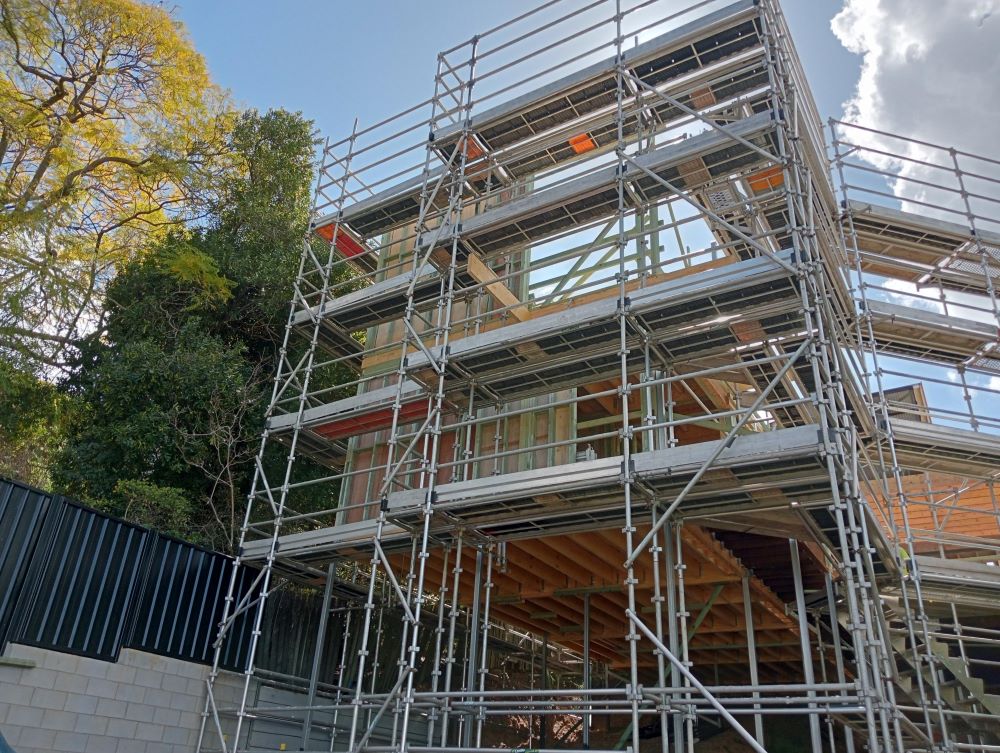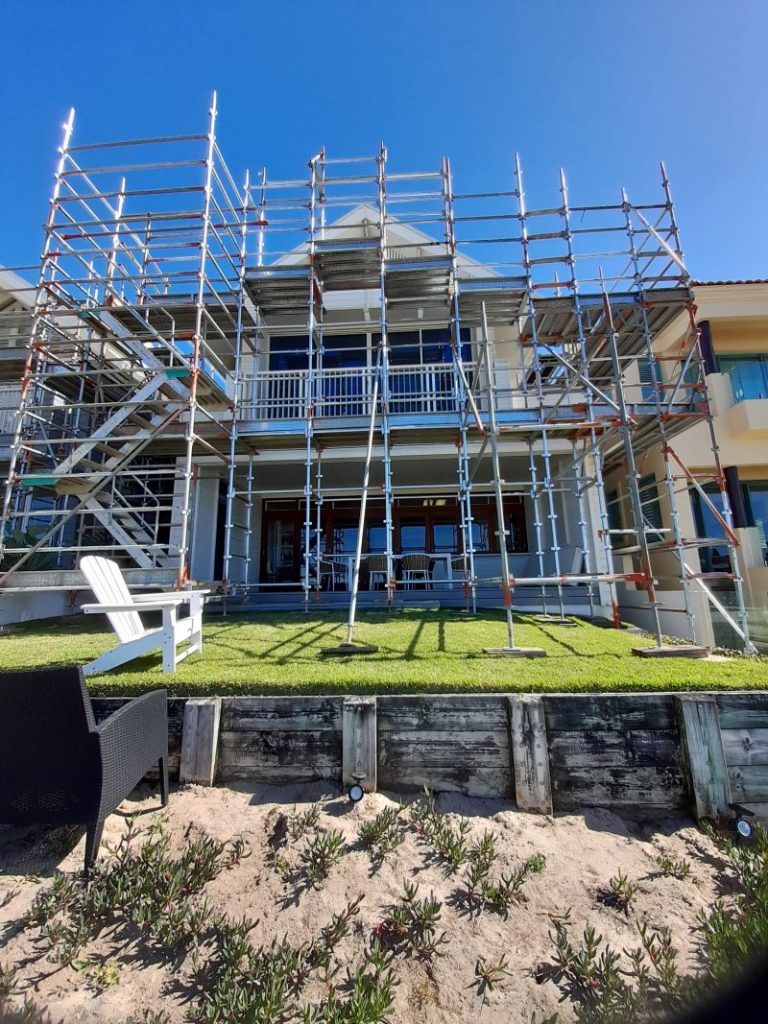Comprehensive Guide to Choosing Between Aluminium and Steel Scaffolding for Your Construction Projects
Choosing the right scaffold for your construction or renovation project is critical to ensuring both safety and operational efficiency. Among the leading options available are aluminium scaffolding and steel scaffolding. Each material has distinct characteristics, advantages, and suitability for various project needs. This detailed comparison will delve into the features, benefits, and optimal use cases of both materials, empowering you to make an informed decision that aligns with your specific project requirements and enhances overall productivity.
When evaluating scaffolding options, it’s essential to understand the unique benefits associated with aluminium and steel scaffolding. This guide will provide you with an in-depth examination of these materials, equipping you with the knowledge to select the best scaffold that meets your project demands and enhances safety standards.

Maximize Your Project Efficiency with the Benefits of Aluminium Scaffolding
Aluminium scaffolding is highly valued for its lightweight structure and exceptional ease of handling, making it an ideal choice for projects that require frequent relocation and rapid assembly. The individual components of aluminium scaffolding weigh significantly less than those constructed from steel, allowing for easier transportation and maneuverability on the work site. This characteristic is particularly advantageous for contractors working in narrow spaces or environments where scaffolding needs to be repositioned frequently, ultimately leading to a more streamlined workflow and enhanced project efficiency.
Moreover, aluminium scaffolding is recognized for its remarkable corrosion resistance. This vital quality makes it an excellent choice for outdoor projects or in areas with high humidity, ensuring that the scaffold maintains both its structural integrity and visual appeal over time. The corrosion-resistant properties of aluminium scaffolding significantly contribute to its long-lasting performance and reliability, which are essential for projects that are exposed to challenging weather conditions or moisture, thereby minimizing the risk of structural failure.
The setup and dismantling process for aluminium scaffolding is typically quick and straightforward due to components designed for easy assembly. This efficiency can lead to substantial time savings on job sites, especially for projects operating under tight deadlines. By minimizing the time spent on setup, construction teams can concentrate more on completing their tasks effectively and safely, resulting in improved productivity and project outcomes.
Harness the Exceptional Strength and Stability of Steel Scaffolding for Your Construction Needs
Steel scaffolding is renowned for its superior strength and impressive load-bearing capacity, making it an exceptionally durable choice for construction projects that require robust support. This material is specifically designed to accommodate significant weight and withstand challenging conditions, providing a stable platform for workers, even in demanding environments. Its rigidity and overall strength make it the preferred option for projects involving heavy machinery or substantial materials, ensuring both safety and reliability at elevated heights.
The durability of steel scaffolding offers a significant advantage, particularly in adverse weather conditions or high-traffic areas where the scaffold might experience heavy usage. Unlike lighter materials, steel scaffolding is engineered to resist bending or deformation, guaranteeing a secure working environment for personnel. This reliability fosters confidence and a sense of security among construction teams, allowing them to work without distractions or safety concerns.
Additionally, steel scaffolding is recognized for its cost-effective longevity. Although the initial investment may be higher than that of aluminium, the durability and extended lifespan of steel scaffolding make it a financially smart choice over time. This material can endure repeated uses, resulting in fewer replacements or maintenance needs, thereby offering significant savings in the long run, especially for large-scale or ongoing projects.
When deciding between aluminium and steel scaffolding, it is essential to thoroughly evaluate the unique requirements of your specific project. Factors such as material weight, scaffold height and size, and the environmental conditions at the job site will heavily influence your final decision, ensuring that the chosen scaffold aligns with your operational needs.
Consulting with your scaffold hire company can provide valuable insights and assistance in selecting the most appropriate option for your project’s specific demands. For additional information on when scaffolding is necessary and the types of projects that may require it, explore our article on when to hire scaffolding for expert guidance.
Critical Factors to Evaluate When Selecting the Ideal Scaffold Material
Several key factors must be evaluated when weighing the choice between aluminium and steel scaffolding. A thorough understanding of each scaffold material’s strength and durability, weight and portability, and cost and affordability will empower you to make an informed decision that aligns with the specific requirements and constraints of your project.
Evaluating the Strength and Durability of Aluminium vs. Steel Scaffolding
Both aluminium and steel scaffolds are recognized for their strength and durability; however, they exhibit distinct characteristics that may influence your choice. Steel scaffolding is generally regarded as possessing superior strength and load-bearing capacity compared to aluminium scaffolding. The robust composition of steel allows it to withstand heavy loads, ensuring stability in challenging construction scenarios, which is crucial for ensuring worker safety.
On the other hand, aluminium scaffolds, while strong and durable, may not support exceptionally heavy loads as effectively as steel. Therefore, it is vital to carefully assess your project’s weight requirements and load expectations to determine which scaffold material best meets your operational needs and complies with safety standards. This evaluation will play a critical role in ensuring a successful and safe project execution.
Investigating Weight and Portability Features of Scaffolding Options
Aluminium scaffolds present a notable advantage concerning weight and portability. Their lightweight design facilitates significantly easier handling and transportation when compared to their heavier steel counterparts. This characteristic is especially beneficial in smaller-scale projects or scenarios where scaffolding requires frequent repositioning, as it reduces physical strain on workers and boosts overall productivity on the job site.
While steel scaffolds are generally heavier, they still offer a degree of portability; however, they typically demand more effort and manpower during transportation. By understanding the relevant weight and portability aspects of your project, you can ensure efficient and safe scaffold use throughout your operations, ultimately leading to enhanced dynamics on the job site and improved worker morale.
Uncover the Unique Advantages of Aluminium Scaffolding for Your Projects
Upon reviewing various scaffold materials, aluminium scaffolding offers a multitude of unique advantages that make it a preferred option for a wide range of construction and renovation projects.
Experience Effortless Handling with the Lightweight Design of Aluminium Scaffolding
A key advantage of aluminium scaffolding is its lightweight design. When compared to steel scaffolding, aluminium is noticeably lighter, which enhances its manageability and transportability. This characteristic not only accelerates the assembly and disassembly processes but also contributes to a more efficient workflow, ultimately reducing the overall project timeline. Additionally, the ease of handling significantly boosts worker productivity, minimizing the risk of fatigue-related accidents and promoting a safer environment on site.
Benefit from Exceptional Corrosion Resistance for Long-lasting Performance
Aluminium scaffolding is distinguished by its remarkable corrosion resistance, making it a superior choice for diverse environmental conditions. Unlike steel, which is prone to rust and deterioration, aluminium’s inherent resistance to corrosion ensures it retains its structural integrity even when exposed to moisture or outdoor elements. This feature is particularly advantageous for projects conducted in damp or humid environments, guaranteeing that the scaffold remains safe, reliable, and effective throughout its use, regardless of the conditions it encounters.
Enhance Operational Efficiency with Rapid Assembly and Disassembly of Aluminium Scaffolding
Another significant benefit of aluminium scaffolding is its quick assembly and disassembly capabilities. The lightweight components, intuitive connectors, and reliable locking mechanisms streamline the setup process. This efficiency is especially valuable in time-sensitive projects or when scaffolding must be relocated frequently. The rapid assembly and disassembly associated with aluminium scaffolding not only saves time but also helps reduce overall labour costs, providing a considerable economic advantage for project managers aiming to optimize their resources and enhance productivity.

Discover the Unmatched Benefits of Steel Scaffolding for Construction Projects
Steel scaffolding offers numerous advantages that solidify its position as a top choice among contractors and builders when determining the optimal scaffold for your construction project.
Reap the Benefits of Unrivaled Strength and Load Capacity with Steel Scaffolding
One of the standout advantages of steel scaffolding is its unparalleled strength and load capacity. Steel is well-known for its exceptional durability and ability to support substantial loads, making it ideal for projects where scaffolding must carry significant weights. Steel scaffold systems are meticulously engineered to provide workers with a stable and secure platform, ensuring their safety while they operate at elevated heights and in challenging environments, such as when working on large-scale constructions.
Experience Remarkable Durability in Adverse Environmental Conditions with Steel Scaffolding
Steel scaffolding is resilient against a multitude of environmental factors, making it suitable for use in harsh conditions. It is designed to endure adverse weather elements, including high winds, heavy rain, and extreme temperature fluctuations. This durability guarantees that the scaffold remains stable and secure, thereby creating a safe working environment for construction teams. Whether dealing with projects such as gutter replacements or other tasks that require scaffolding in demanding conditions, steel scaffolding is engineered to withstand the rigors of the job.
Uncover the Cost-Effective Longevity of Steel Scaffolding for Long-Term Use
Steel scaffolding is widely recognized for its exceptional longevity and overall cost-effectiveness. Its inherent durability ensures that the scaffold can withstand numerous construction projects over extended periods without significant degradation. Unlike other materials, steel scaffolding is less prone to wear and tear, minimizing the need for frequent replacements or repairs. This aspect not only provides substantial long-term savings but also allows for uninterrupted project progression, making it a smart investment for any construction enterprise.
To determine the most suitable scaffold material for your particular project, it is essential to assess your needs comprehensively, consult with industry professionals, and consider safety standards alongside budgetary constraints. This thorough evaluation will lead to a well-informed decision that aligns with both your operational goals and project requirements.
Step-by-Step Process to Select the Ideal Scaffold for Your Construction Project
Choosing the right scaffold for your project necessitates a meticulous assessment of your unique needs. By thoroughly evaluating your project requirements, consulting professionals, and considering both safety and budget constraints, you can make a well-informed decision that aligns with your operational goals and enhances project efficiency and safety.
Thoroughly Assess Your Project Requirements for Effective Scaffold Selection
Begin by evaluating the specific details of your project and the tasks that require scaffold support. Key considerations include the height and configuration of the structure, the anticipated duration of the project, and any specialized requirements that might arise during the construction process.
For instance, scaffolding for an apartment complex will have distinctly different specifications compared to scaffolding or guard rails required for gutter replacement. By fully understanding your project needs, you can ascertain the appropriate type and configuration of scaffold that will best meet your operational objectives, ensuring safety and efficiency on site while adhering to all relevant regulations.
The Essential Role of Professional Consultation in Scaffold Selection
Engaging with industry experts, such as Cando Scaffolding, is highly advisable when navigating the complexities of scaffold selection. Our extensive industry experience ensures you receive invaluable guidance, helping you adhere to safety standards and regulatory requirements throughout your project.
Contact us today or request a quote to start the process of selecting the ideal scaffold for your construction project. Let our expertise guide you toward making the best choice for safety, efficiency, and cost-effectiveness.
The post-Scaffold Choices: Aluminium vs Steel for Your Project appeared first on https://writebuff.com/.
The Article Aluminium vs. Steel: Choosing the Best Scaffold for Your Project Was Found On https://limitsofstrategy.com


No responses yet